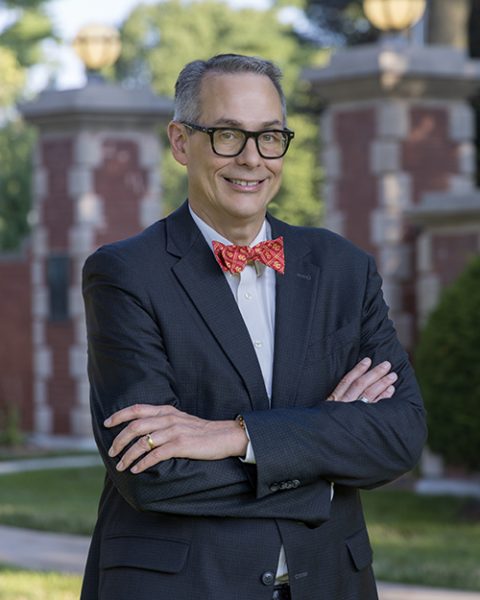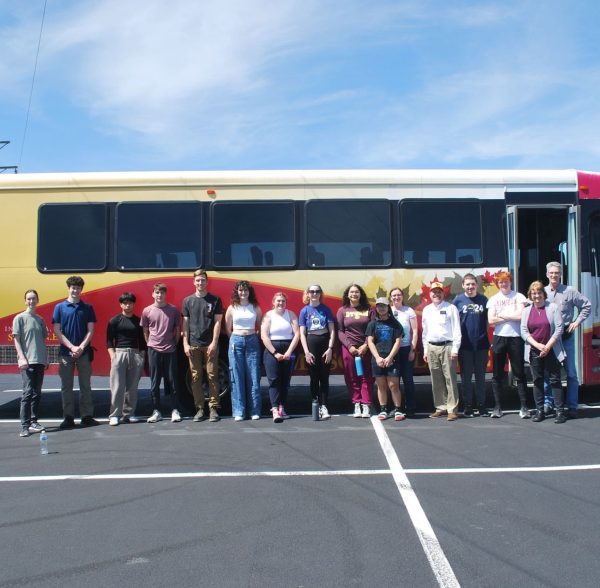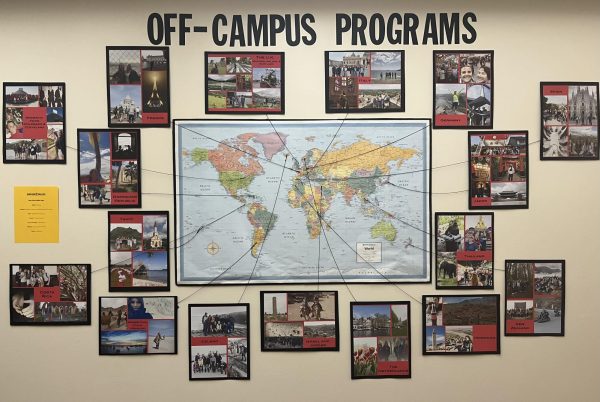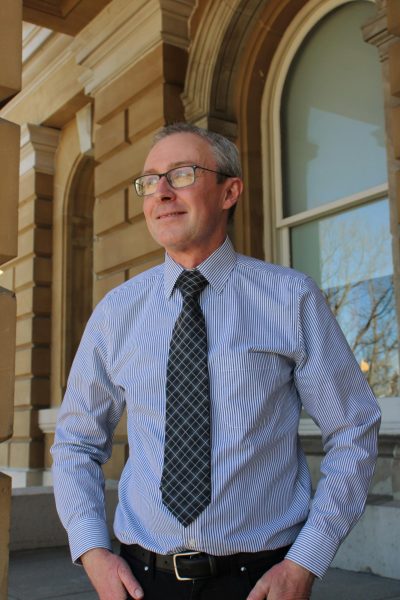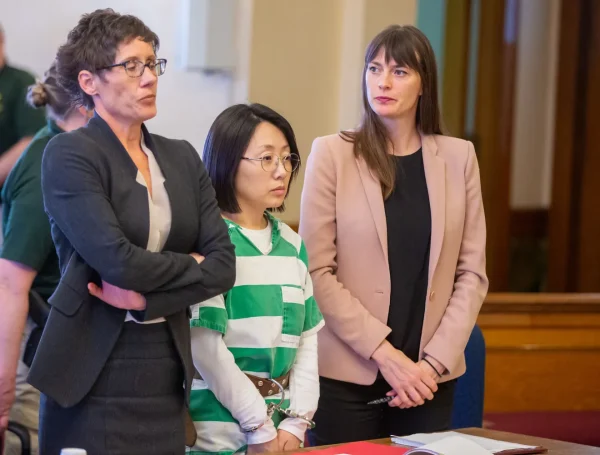Walking ancient roads: artist David Helm presents work
February 16, 2015
Simpson College students and faculty gathered Thursday evening in Farnham Galleries to experience a variety of artwork inspired by ancient Rome.
David Helm, a professor of art at the University of Nebraska Omaha, displayed the artwork. Some of the work included photography, silhouette paintings and an installation piece representing a Roman road.
All the pieces connected to a central project Helm discussed during a presentation at the reception.
Helm finds old roads, buildings and wells. During the presentation, he explained why he does this and how it connects to his displayed artwork.
“I always kind of kept my foot in the door of history,” Helm said. “I wanted to create a show that would make you feel the process and the experience of finding the ancient Roman roads.”
Helm’s process included laying old maps over contemporary maps, attempting to find where buildings and roads would have existed thousands of years ago and traveling to hunt the roads down.
Helm said during the presentation he was partially inspired by a quote from Saint Augustine. Helm said, “He referred to the present as the knifes edge between the past and future, and it seemed like an interesting idea to try and catch that moment.”
Stephanie Lenertz, sophomore graphic design major who attended the reception, said she greatly enjoyed the presentation and could relate to the concept of catching ‘the knife’s edge.’ She said, “It’s beautiful and it’s like you can feel another presence. You can feel that history has been made here.”
The main focus of the presentation was relaying Helm’s experience traveling to Rome to find the ancient roads photographed and represented in his artwork.
Holly West, a non-traditional art education major, found the presentation and display intriguing and interesting. She said, “I like the fact that it is different; a different medium and a different subject matter.”
She especially liked the integration of Helm’s silhouette paintings and road installation.
In this piece, one wall was covered with large silhouettes of a variety of people. The images appeared to be walking out of a mist toward the Roman road.
Helm said about this piece, “You have these souls because this is the memory of these places, these roads. Thousands, probably millions, of people have traveled across them for various reasons – I think it is the absence of people that was interesting to me.”
West said she interpreted the piece as it was intended and found the content striking. She also said, “I would be overcome with that same feeling he was describing, but how do you describe it? Just even attempting it made it interesting to me.”
It was the variety of medium, integrating photography, painting and installation, which attracted Lenertz to Helm’s display. She said she had not seen a lot of different types of artwork before attending Simpson, and by inviting artists with multiple mediums, students are able to see various kinds of artwork.
“I like seeing a variety of things,” Lenertz said. “The benefits of having these on campus is immeasurable because it brings a lot of culture and different ideas.”
According to the University of Nebraska Omaha’s website, Helm has exhibited installations at museums and galleries in New York City, Pittsburgh, Chicago, Brooklyn, Cleveland and Cincinnati. He has also traveled and done work on the history of women, developed a projection technology and has created a variety of public pieces.
“As an art student, it is really great getting to see working artists doing what they love,” Lenertz said.
Helm’s artwork was available for public viewing from Jan. 13 until his reception Thursday. According to Simpson’s website, the next artist being featured in Farnham Galleries will Darrell Roberts, whose artwork will appear Feb. 23 and will be displayed until Mar. 26.








